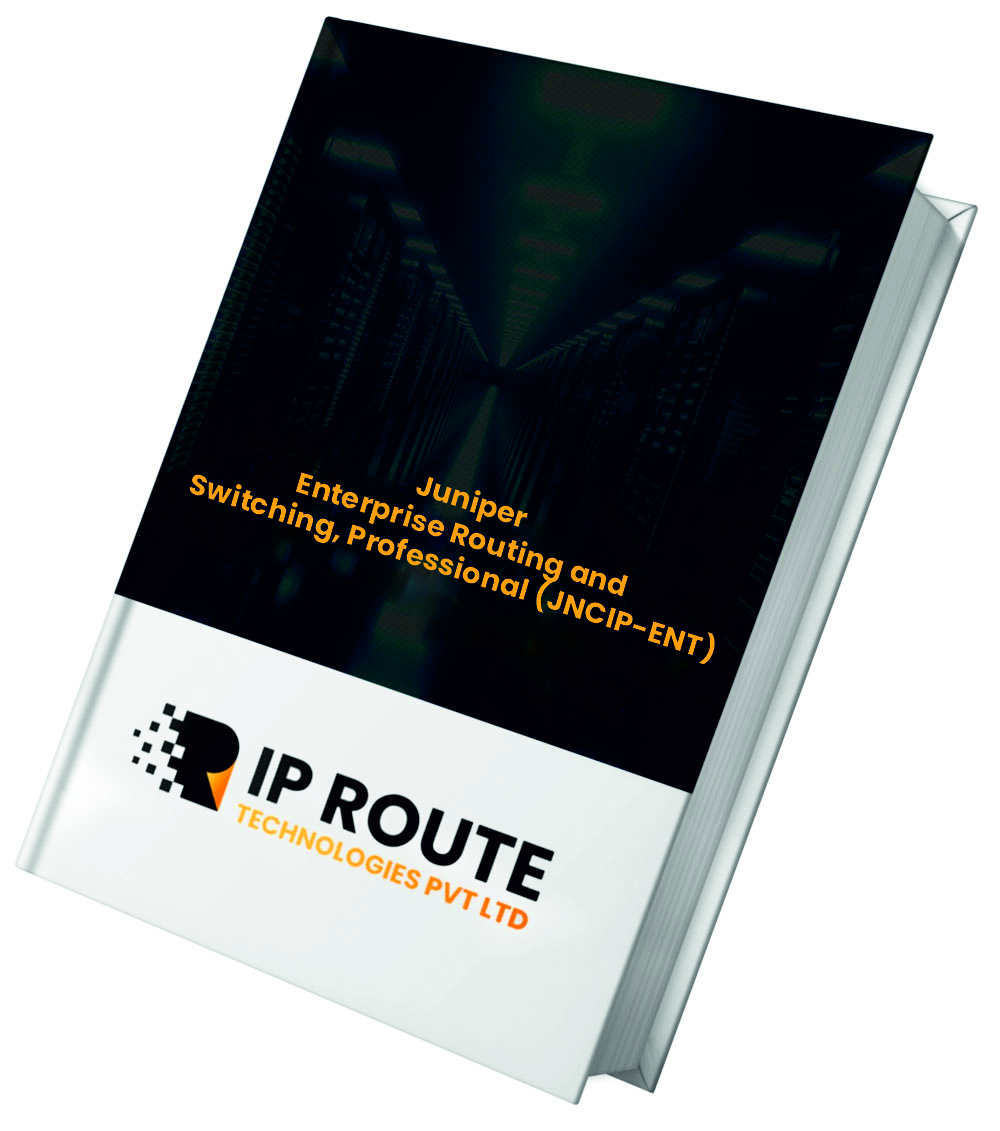Description
Course Summary
JNCIP-ENT-TOPICS
Here’s a high-level view of the skillset required to successfully complete the JNCIP-ENT certification exam.
- Describe the concepts, operation, or functionality of IGPs:
- IS-IS
- OSPFv2 and OSPFv3
- Routing Policy
- Given a scenario, demonstrate knowledge of how to configure, troubleshoot, or monitor IGPs
- Describe the concepts, operation, or functionality of BGP:
- BGP route selection process
- Next hop resolution
- BGP attributes: concept and operation
- BGP communities
- Load balancing – multipath, multihop, forwarding table
- NLRI families: inet and inet6
- Advanced BGP options
- Given a scenario, demonstrate knowledge of how to configure, troubleshoot, or monitor BGP:
- Implement BGP routing policy
- Describe the concepts, operation, or functionality of IP multicast:
- Components of IP multicast, including multicast addressing IP multicast traffic flow
- Any-Source Multicast (ASM) vs. Source-Specific Multicast (SSM)
- RPF – concept and operation
- IGMP, IGMP snooping
- PIM sparse-mode
- Rendezvous point (RP) – concept, operation, discovery, election
- Anycast RP
- MSDP
- Routing policy and scoping
- Given a scenario, demonstrate knowledge of how to configure, troubleshoot, or monitor IP multicast:
- IGMP, PIM-SM (including SSM)
- Implement IP multicast routing policy
- Describe the concepts, operation or functionality of advanced Ethernet switching:
- Filter-based VLANs
- Private VLANs
- Dynamic VLAN registration using MVRP
- Tunnel Layer 2 traffic through Ethernet networks
- Layer 2 tunneling using Q-in-Q and L2PT
- Given a scenario, demonstrate knowledge of how to configure, troubleshoot, or monitor advanced Ethernet switching:
- Filter-based VLANs
- Dynamic VLAN registration using MVRP
- Tunnel Layer 2 traffic through Ethernet networks
- Layer 2 tunneling using Q-in-Q and L2PT
- Describe the concepts, operation, or functionality of advanced spanning tree protocols, including MSTP or VSTP.
- Given a scenario, demonstrate knowledge of how to configure, troubleshoot, or monitor MSTP or VSTP.
- Describe the operation of various Layer 2 authentication or access control features:
- Authentication process flow
- 802.1x – concepts and functionality
- MAC RADIUS
- Captive portal
- Server fail fallback
- Guest VLAN
- Considerations when using multiple authentication/access control methods
- Given a scenario, demonstrate how to configure, troubleshoot, or monitor Layer 2 authentication or access control.
- Describe the concepts, operation, or functionality of Junos CoS for Layer 2/3 networks:
- CoS processing on Junos devices
- CoS header fields
- Forwarding classes
- Classification
- Packet loss priority
- Policers
- Schedulers
- Drop profiles
- Shaping
- Rewrite rules
- Given a scenario, demonstrate knowledge of how to configure, troubleshoot, or monitor CoS for Layer 2 or 3 networks.
- Describe the concepts, operation or functionality of features that facilitate IP telephony deployments:
- Power over Ethernet (PoE)
- LLDP and LLDP-MED
- Voice VLAN
- Given a scenario, demonstrate how to configure, troubleshoot, or monitor features used to support IP telephony deployments.
- Describe the concepts, operation, or functionality of Junos EVPN:
- Route types (e.g., Type 1, 2 3)
- VXLAN
- Multi-homing (e.g., active route types)
- Given a scenario, demonstrate knowledge of how to configure, troubleshoot, or monitor EVPN.
Schedule & Pricing
Please write to us at [email protected] for the price and upcoming schedule.
What Our Customers Say
I would like to thank IP Route and their team members because they are doing an outstanding job in serving people who have an ambition of getting into networking field as compared to others. Hands down the best choice for CCIE Infrastructure v1.1. Looking forward to enroll for more courses and recommend others.
Trainers at IP Route are super professional & friendly. Their labs are up to date and provide 24/7 support. I enrolled for CCIE Enterprise and my journey was amazing. If you are looking to start your journey in networking you should definitely choose IP Route.
Trainers at IP Route are super professional & friendly. Their labs are up to date and provide 24/7 support. I enrolled for CCIE Enterprise and my journey was amazing. If you are looking to start your journey in networking you should definitely choose IP Route.
My Journey with IP Route was awesome and the trainers are so knowledgeable the coaching style is convenient and easy. They helped me clear my doubts anytime I wanted with the best explanation to every topic. They guided me really well to clear my CCIE Enterprise lab exam, 5/5
Awesome experience:
Updated Labs, Great Support, Professional trainers, Overwhelming after sales support, Best CCIE
Updated Labs, Great Support, Professional trainers, Overwhelming after sales support, Best CCIE
I cleared my CCIE Enterprise with the guidance of IP Route and their mind-blowing training. I heard about IP Route through one of my friend and I’m glad I took his advice and enrolled myself, received the best training from the best instructors
Thankyou so much IP Route for guiding me from what to choose to today achieving my CCIE number. I passed my CCIE Enterprise exam only with the help of IP Route. They have the best hands-on lab which prepared me really well for my final exam. Would definitely recommend it to others.
Best institute to learn networking. The trainers are skilled and have really good communication. Also they provide lab facilities and even address any queries at any time of the day. The course fee is pocket friendly and have flexible payment methods with is great for a fresher too.


